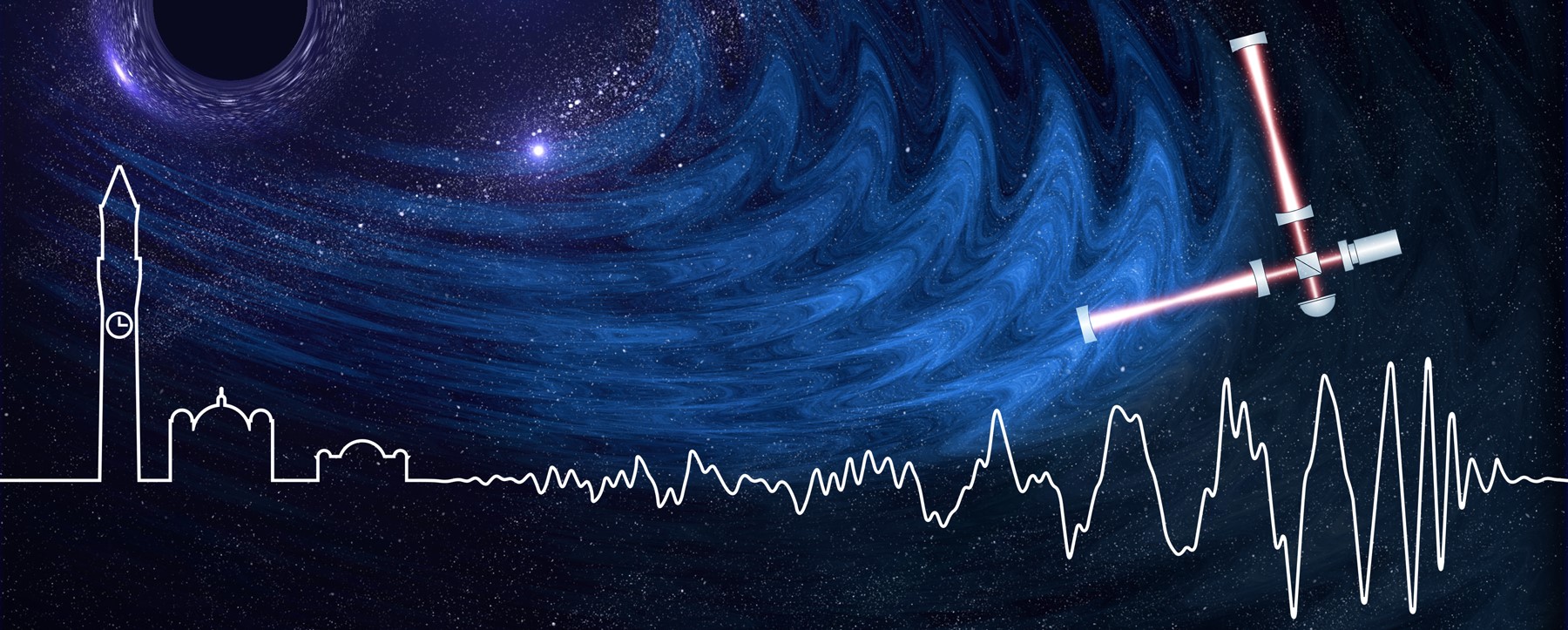
UK astrophysicists are celebrating the new detection of a series of gravitational wave signals – one of which seems likely to have been caused by the crashing together of two neutron stars, and another that could be the first evidence of the collision of a neutron star and a black hole.
Researchers from the Universities of Birmingham, Cardiff and Glasgow are key partners in the international scientific collaboration led by the National Science Foundation's Laser Interferometer Gravitational-Wave Observatory (LIGO), based in the United States, and Virgo, based in Italy. The new detections were made during its latest run, which commenced on 1 April 2019.
Professor Alberto Vecchio, Director of the Institute for Gravitational Wave Astronomy, University of Birmingham, said: “LIGO-Virgo have gone off a flying start in the new observing run. We are busy following up several gravitational-wave detection candidates from binary systems of black holes and neutron stars. If the instruments continue to perform as they’ve done so far, it’s going to be many sleepless nights of hard work to tease out from the data the full richness of information from these intriguing cosmic collisions."
On April 25, 2019, the detectors registered gravitational waves from what appears likely to be a collision between two neutron stars—the dense remnants of massive exploded stars – which occurred about 500 million light-years from Earth.
One day later, on April 26, the LIGO-Virgo network spotted another candidate source from an event about 1.2 billion light-years away. While the signal was weak and thus requires further investigation, initial analysis of the signal suggests one possibility is that it could have been caused by an event which has never been witnessed before: the collision of a neutron star and black hole.
The new results join the growing list of possible gravitational-wave detections since LIGO and Virgo resumed operations last month.
Professor Andreas Freise, Deputy Director, Institute of Gravitational Wave Astronomy, University of Birmingham said: “What a fantastic start! We had anticipated that LIGO and Virgo would observe many new signals during this observation run. It is very exciting to see nature providing us with several new signals in the first month already, fulfilling our earlier predictions.”
The twin detectors of LIGO—one in Washington and one in Louisiana—along with Virgo, located at the European Gravitational Observatory (EGO) in Italy, resumed operations April 1, after undergoing a series of upgrades to increase their sensitivities to gravitational waves—ripples in space and time. Each detector now surveys larger volumes of the universe than before, searching for extreme events such as smash-ups between black holes and neutron stars.
"The latest LIGO-Virgo observing run is proving to be the most exciting one so far," says David H. Reitze of Caltech, Executive Director of LIGO. "We're already seeing hints of the first observation of a black hole swallowing a neutron star. If it holds up, this would be a trifecta for LIGO and Virgo—in three years, we'll have observed every type of black hole and neutron star collision. But we've learned that claims of detections require a tremendous amount of painstaking work—checking and rechecking—so we'll have to see where the data takes us.”
For further information please contact:
Beck Lockwood, Communications Manager (Science and Technology), University of Birmingham, tel: 0121 414 2772
Jake Gilmore, STFC Media Manager, tel: 07970994586
In 2015, after LIGO began observing for the first time in an upgraded program called Advanced LIGO, it soon made history by making the first direct detection of gravitational waves. The ripples traveled to Earth from a pair of colliding black holes located 1.3 billion light-years away.
Since then, the LIGO-Virgo detector network has uncovered nine additional black hole mergers and one explosive smashup of two neutron stars. That event, dubbed GW170817, generated not just gravitational waves but light, which was observed by dozens of telescopes in space and on the ground.
More Information about the LIGO-Virgo collaborations:
LIGO is funded by NSF and operated by Caltech and MIT, which conceived of LIGO and led the Initial and Advanced LIGO projects. Financial support for the Advanced LIGO project was led by the NSF with Germany (Max Planck Society), the UK (Science and Technology Facilities Council) and Australia (Australian Research Council-OzGrav) making significant commitments and contributions to the project. Nearly 1300 scientists from around the world participate in the effort through the LIGO Scientific Collaboration, which includes the GEO Collaboration. A list of additional partners is available.
The Virgo Collaboration is currently composed of approximately 350 scientists, engineers, and technicians from about 70 institutes from Belgium, France, Germany, Hungary, Italy, the Netherlands, Poland, and Spain. The European Gravitational Observatory (EGO) hosts the Virgo detector near Pisa in Italy, and is funded by Centre National de la Recherche Scientifique (CNRS) in France, the Istituto Nazionale di Fisica Nucleare (INFN) in Italy, and Nikhef in the Netherlands. More information is available on the Virgo website.
Since the detectors first started operation in September 2015, the LIGO and Virgo Collaborations, which include the Universities of Birmingham, Cardiff and Glasgow and also the University of Strathclyde, have completed two observation runs. During these runs they have detected gravitational waves from a total of ten stellar-mass binary black hole mergers – compact objects likely formed by the gravitational collapse of massive stars. They have also detected one binary neutron star coalescence – generated by two neutron stars spiraling into each other.